#hite institute
Explore tagged Tumblr posts
Text
The state intervenes in children’s use of the city, criminalising children’s uses of the streets [...]. Much of this age-segregation emerged in the so-called Progressive Era (1890-1918) in northern cities of the United States, particularly Chicago. Informed by turn-of-the-century science [...], [t]hese child-savers sought to transform delinquent urban children into upright citizens. In doing so, reformers changed the shape of America’s cities. [...] Only a handful of dedicated playgrounds existed in urban America in the 1890s. [...] Contrasting images of working-class, immigrant youth left unsupervised on the streets with children of their own class, who led increasingly sheltered lives, middle-class urbanites feared for the future of the country. The burgeoning reform class, led by Chicagoans such as Jane Addams, feared so-called “swarms” of children on the streets [...].
---
A new theory of child-development known as recapitulation theory had recently emerged. Proponents of this theory, such as G. Stanley Hall, argued that children passed through (or recapitulated) all the stages of the evolution of the race before they achieved adulthood. [...] Advocates [...] idealised almost all of white boys’ misbehaviour as recapitulation of the race’s past [...]. Although recapitulation theory had room for the sons of European immigrants, [...] children of colour remained outside the narrative of idealised misbehaviour. [...] [W]hite Americans [...] sought to repress the misbehaviour or so-called childhood savagery of children of colour rather than encourage it. Thus, just as white children were encouraged to embrace their inner savage and hold mock powwows and “to play Indian”, Progressive reformers confined Native American children to “civilizing” boarding schools [...].
Growing concerns over masculinity at the turn of the twentieth century limited reforms that could be seen as “molly-coddling”. To completely crush the misbehaving instinct, many middle-class Americans believed, would be just as dangerous [...]. Drawing on recapitulation theory, reformers believed the key to anti-delinquency among [...] European [...] children was providing these children with supervised, orderly places where the misbehaving instinct could safely play out. Central to reformers’ attempts to save but not tame [...] children meant the development of the world’s first municipal playground system in Chicago [...]. By 1915, the city of Chicago ran sixty-six recreation centres [...]. President Teddy Roosevelt heralded it as “one of the most notable civic achievements of any American city.” From Chicago, the idea spread around the country. By 1921, almost 200 cities employed a total of over eleven thousand men and women as year-round playground workers. [...]
---
But the state, too, struggled to control urban childhood. [..] [T]ruant officers [...] struggled with huge caseloads in the early twentieth century. [...] On the streets, escapees evaded police, probation and truant officers [...]. A study of reform schools in and near Chicago in the early twentieth century found two-fifths of detainees left in what was euphemistically called ‘informal departure’ [...]. Escape caused such an issue for reformatories that it was considered among the most serious offences and, as such, carried the heaviest punishments including beatings, being hung by the wrists, being shackled, wearing heavy iron studded shoes, being placed in a tub of ice water, and being caged.
Even as Progressive ideals ostensibly moved prisons and other reform institutions further from the punishment of the body to the treatment of the individual’s soul, in practice, reformatory officials often resorted to physical punishments for the treatment of runaways. [...] [T]he new juvenile institutions of the early twentieth-century differed so wildly in practice from their conception in theory. [...]
---
By the 1930s, however, the concept of the dangerous but ultimately salvageable swarm which had shaped Progressive Era responses to the problems of children and the city was gradually replaced by the far more pessimistic idea of individual deviant personalities. Faith in the ability to transform children through transforming the city collapsed. [...] Juvenile Courts also faced increasing pessimism. In 1936, leading child-saver Grace Abbott asked rhetorically whether the Juvenile Court of Chicago had proved a success or a failure and concluded pessimistically [...].
Delinquency experts increasingly turned to psychiatry to explain and treat criminal behaviour; the psychiatrist supplanted the playground as the key to anti-delinquency.
---
As reformers advocated individualised treatment of delinquent personalities, on the streets, changing priorities of policing increasingly and aggressively targeted children of colour. In addition, suburbanisation was changing the demographics of the inner city. Increasingly, white families were choosing to move out to the suburbs [...]. As inner-city youth became more and more synonymous with minority youth, the urban child seemed increasingly outside the realm of “saving” and middle-class white Americans responded to black youth’s corner culture with intense policing and urban flight, not playgrounds and child-saving. The pessimistic view [...] laid the foundation for the increasingly racialised and violent attempts to control poor urban children in the later twentieth century. [...]
---
Most importantly, Progressive reformers criminalised and delegitimised much of children’s traditional use of the streets, ensuring that age became a crucial component of urban discipline. [...] When encounters with real children transformed institutions and regulations in unexpected ways, the result was increasingly coercive methods and policing.
---
All text above by: Oenone Kubie. “Child’s Play: How Progressive Era Science Shaped America’s Playgrounds.” Oxford Urbanists. 15 September 2019. [Bold emphasis and some paragraph breaks/contractions added by me.]
#abolition#ecology#colonial#imperial#carceral geographic#geographic imaginaries#ecologies#multispecies#debt and debt colonies#black methodologies#indigenous#victorian and edwardian popular culture#nonplaces#katherine mckittrick#kathryn yusoff#progressive era chicago#ongoing chicago discussion
313 notes
·
View notes
Text
For women whose success depends on selling books, sustaining a viable career after an initial best seller requires maintaining a palatable public persona. But that’s virtually impossible for any woman writing critically about women’s sexual needs—even a conventionally attractive white woman like Hite whose books have sold in staggering numbers. When public opinion turns, or powerful institutions withdraw their resources, having other women’s private support may not be enough to keep the work afloat. The Hite Report drew on anonymous questionnaires distributed by Hite that asked questions such as “How do you masturbate? Please explain with a drawing or detailed description” and “Do you prefer sex with men, women, either, or yourself?” The surveys were filled out by 3,019 women of varying ages, races, professions, and geographic backgrounds within the United States. In her findings, Hite captured the women’s candid reflections on masturbation, intimacy, and the frustrating constraints of heterosexual sex. Without jargon or pathology, she documented the deep misunderstandings of female sexuality that pervaded American culture. “Women who read it will feel enormously reassured about their own sexuality and if enough men read it, the quality of sex in America is bound to improve,” a New York Times review suggested at the time.
The Hite Report went on to become the 30th-best-selling book ever, but in the years following its release, Hite was pilloried as a man-bashing pseudoscientist intent on destroying the nuclear family. In an archival newscast, one man claims, “They call The Hite Report ‘The Hate Report,’ because it really is filled with a lot of hate toward men.” (That moniker, it turns out, came from Playboy.) Though Hite had studied for her Ph.D. at Columbia University (before eventually dropping out), many people refused to treat her as an intellectual, especially after her prior work as a model was publicized. “I couldn’t be a good researcher because I was just a bimbo who had posed nude,” Hite lamented, in one of many personal writings read in the documentary by Dakota Johnson. By the film’s end, it becomes clear that there was no viable way for Hite to have presented her findings without facing tremendous backlash. More often than not, the people who responded with vitriol and laughter hadn’t engaged with her actual work, instead fixating on the intangible threats she represented.
One jarring clip from a 1987 episode of The Oprah Winfrey Show is a particularly illustrative example. In it, Hite faces an audience filled entirely with men—a stunt, in other words—who seem to take issue with a new book that Hite had published that year. Women and Love: A Cultural Revolution in Progress painted a picture of intimacy in crisis, with many women reporting that they felt unfulfilled or otherwise neglected in their marriage. But even when Oprah tried to rein in the hostile members of her audience, their language conveyed something elemental: The men seemed to prefer that women not share their opinions at all. One man in the audience voiced his frustration with the larger feminist movement that Hite represented, laying bare his discomfort with having to hear women’s thoughts—not just about sex or love, but also about work: “What I’m complaining about is the general approach to this whole program, which started back with women’s lib,” he said. “Let women have 47 percent of the labor force, but I don’t wanna hear you complaining about it—you started the program.” Even now, too many people are uncomfortable reading about women’s own experiences, and women who write about sex and power risk alienation, instability, harassment, and far worse. Modern media outlets may not be pulling tricks as risible as Winfrey’s male-only audience, but the industry can still be a hostile place for women’s voices. In early November, G/O Media shut down Jezebel, which had ushered in an era of feminist writing native to the internet, and was a place where writers and commenters could wrestle with urgent issues without having to defer to the centrality of men’s perspectives—and where they could also be freely silly when they wanted to. (Last week, it was announced that Jezebel was acquired by Paste Magazine, which plans to revive it.) Jezebel was part of a diverse group of women’s publications that included Bitch Media, Broadly, Feministing, and The Hairpin—all of which have ceased publication in recent years as corporate media’s ad-supported model continues to crumble. (Full disclosure: I wrote a few times for Jezebel and The Hairpin.)
The relationship between commerce and journalism that covers any issue deemed controversial is inherently uneasy: A recent report from 404 Media quoted Lauren Tousignant, Jezebel’s interim editor in chief, who claimed that companies were reluctant to buy ads on Jezebel because of the possibility of having their ads posted next to anything that could be considered a “debated sensitive social issue.” “It was very much the problem here that no one will advertise on Jezebel because we cover sex and abortion,” she said. At one point, Tousignant said, the company’s ad-sales team had asked if Jezebel could remove its tagline—“Sex. Celebrity. Politics. With Teeth”—for fear of losing advertisers.
0 notes
Text
Jacket Boys and Ralph Eugene Meatyard
My work Jacket Boys was made during a period while writing my dissertation for my MA degree and looking at the uncanniness in the photographs of Ralph Eugene Meatyard (1925-1972).
For Jacket Boys I have made ‘smaller’ tweed jackets worn by my ex-husband and previous lovers. The intense personal connection with the owners of the jackets is combined with a distorted human figure within an enigmatic domestic surrounding. Below are some reflections on the photographs of Ralph Eugene Meatyard in connection with this work.
-------------------------------
Ralph Eugene Meatyard (1925 – 1972) was an amateur photographer working in Lexington, Kentucky, USA during the mid-twentieth century.
Meatyard’s photographs can be seen to illustrate aspects of Freud’s essay The Uncanny in several ways. As John Dorfman has written in his article Ralph Eugene Meatyard: Surrealist Pastoral, his photographs “seem to depict a dream world. Sometimes scary, sometimes endearing, but always uncanny”. The viewer is taken to a realm where faces are masked, dolls have severed heads and children belong in an in-between place of decaying suburban ruins.

Ralph Eugene Meatyard Untitled, circa 1970, gelatin silver print
In an image from around 1970 a ghost-like figure of a man can be seen inside a bare room of a house whose architectural details suggest an old American vernacular type (Dorfman). The figure of the man is blurred; this blurring device allows Meatyard’s people to become otherworldly, “his bodies that are neither completely in our world or gone from it” (Hite) (2017). The exhibition, Pursuing the Uncanny: Ralph Eugene Meatyard, (2017) organized by the Hite Institute, University of Louisville, explored how Meatyard used prolonged exposures to create the appearance of the unconscious mind becoming present and visible, giving the effect of a spectral figure.
The face of the man is blurred to the point of being faceless and the uncanny effect is increased by the strange scale of the figure, he looks much too tall for the space as if he were in a child-size house (Dorfman). The man looks monstrously elongated like Alice in Lewis Carroll’s Alice’s Adventures in Wonderland, when she grows so big after eating a magic cake, that her head hits the ceiling.
The light from the window is bright white, eliminating the view from outside and this cuts the viewer off reality, from a sense of a real place. Although the room itself looks real, it has decayed appearance, that makes it seem familiar and unfamiliar at the same time (one of Freud’s criteria for something to be uncanny) and reminds one of the upside-down-world of the Netflix horror TV series Stranger Things.
It is this enigmatic quality of Meatyard’s photographs that draws me into his alternative world. Although carefully composed, his images have a casual, accidental quality as if exposing a secret by mistake. One of Freud’s ideas behind the uncanny is that of a secret, that should be hidden having come to light. This is the rationale behind my work Jacket Boys (2023) where my personal secrets are revealed within the seemingly casual appearance of the ‘boys’ whose appearance is out of scale with reality (half-life size). In a similar way to Meatyard plays with scale with his boy/man masked people and the strange, elongated man in Untitled (1970).

Teresa Wilson, Jacket Boy (2023). Wire, Textiles, Harris Tweed Jacket belonging to my husband deconstructed and re-made in a child size.
In this work, the ‘person’ representing my husband has become smaller, belittled, and made uncanny in appearance. His jacket, previously a full-size man’s jacket has been made into a jacket to fit a three-year-old. The distortion is intended to create an uncanny effect on the viewer.
When talking about the figuration of Bacon’s painting Deleuze devized the idea of a ‘diagram’ whereby his techniques of erasure and distortion of the human figure caused an affect which then leads to a sensation in the viewer (Mendelyte), and notes that the “essential point about the diagram is that it is made in order for something to emerge from it , and if nothing emerges from it, it fails”. In the work of Meatyard what ‘emerges’ is the ‘affect’ of the accidental exposure of something uncanny, ephemeral, or secret. In my work I am working with this similar intention - to let casually ‘emerge’ the sensation of distress caused by deforming and re-forming a logical real human being personally known to me and hinting at disturbing thoughts about the relationship.
---------------------------------------------------------------------------
Dorfman, J. ‘Ralph Eugene Meatyard: Surrealist Pastoral’ in Artandantiquesmag.com, (2020)
Hite Art Institute, Pursuing the Uncanny: Ralph Eugene Meatyard. (2017)Press release for Schneider Hall Art Galleries.
Mendelyté, A. ‘Faciality and Ontological Doubt in Ralph Eugene Meatyard’s Photography. Substance. Volume 50, Number 1, 2021, (Issue 154) pp.162-182 (Article)
1 note
·
View note
Text
0 notes
Text
NY / Eusung Lee: Epitaphs

Eusung Lee: Epitaphs October 21, 2023 – November 19, 2023 Opening Reception: October 21, Saturday 6-8PM Special Gallery Hours: Wed - Sun 1-6pm
Tiger Strikes Asteroid New York, in collaboration with DOOSAN Art Center, is thrilled to present Epitaphs, the inaugural solo exhibition in New York by the critically acclaimed South Korean sculptor Eusung Lee.
This exhibition is a part of DOOSAN International Program, designed to expand the global reach of contemporary Korean art through partnerships with Tiger Strikes Asteroid New York.
In Epitaphs, Lee will showcase a series of sculptures and wall-mounted reliefs that evoke a strong sense of bodily presence and narrative possibilities.
In today's rapidly digitizing world, where the boundary between the virtual and the tangible often blurs, Lee remains dedicated to the richness of physical space and the sensory experiences offered by handcrafted materials. She embraces the classical lineage and tactile qualities inherent to sculpture, seamlessly melding an array of media, including wood, clay, metal, paper, fabric, yarn, and ready-made objects.
Doodled Kouros (2021), a large wooden panel, alludes to the iconic Ancient Greek sculptures of nude male youths. Lee stumbled upon the slab of wood in a carpenter's shop where it was originally intended to become a table. Recognizing its latent potential, Lee worked with the panel's inherent characteristics and contours, inscribing the wood grain with marks that alternated between random and intricate. Her carvings included low relief coffee cups, butterflies, and flowering plants—motifs that recur throughout her work and are both universally familiar and deeply personal.
Colloquial Falling (2021-2023) represents a fusion of intersecting forms, reminiscent of both butterflies and human spines. Like much of Lee’s oeuvre, this sculpture engages in an intricate interplay between brutality and care. Delicate insect forms emerge from roughly modeled aluminum, carefully cloaked in knit wool. Within this juxtaposition of warmth and cold, the human and the otherworldly coexist in an intuitively balanced composition.
Pierce, Jane (2019) features an oversized, wall-mounted wooden ear meticulously punctuated by an array of metal earrings and hoops. The name 'Jane' alludes to both the artist's elder sister, who emigrated to the United States long ago, and the enigmatic “Jane Doe”—the term given to an unidentified woman. The ear's form is based on Lee’s fascination with her older sister's pierced ears. Piercing was a rarity in South Korea at the time and became a source of fascination for the artist, symbolizing the unfamiliar, exotic, and dangerous facets of American culture. The ear, while serving as a monument to her sister, also represents the artist as a listener—open to new possibilities and eager to connect.
Eusung Lee (b. 1989) is a visual artist currently living and working in Seoul, South Korea. She holds a BFA from Hongik University and an MFA from Korean National University of Art. Lee has exhibited her work in many museums and art centers, including Art Sonje Center, Hite Collection, WESS, Art Space Boan, Space Catalog. Lee was also a resident artist at Seoul Metropolitan Nanji Art Studio and was selected as a Chanel x Frieze "Now & Next" artist in 2022 and awarded Emerging Artist of 2023 from Seoul Museum of Art.
DOOSAN Art Center, based in Seoul and established in 2007, stands as one of South Korea's foremost nonprofit institutions. It actively supports emerging artists and curators through a range of domestic and international programs. In 2023, DOOSAN aims to enhance its global presence by expanding and strengthening its collaborative projects with Tiger Strikes Asteroid New York, The International Studio & Curatorial Program, and Christopher Y. Lew. DOOSAN International Program encompasses both residencies and exhibitions, fostering growth through partnerships with influential local institutions and experts.

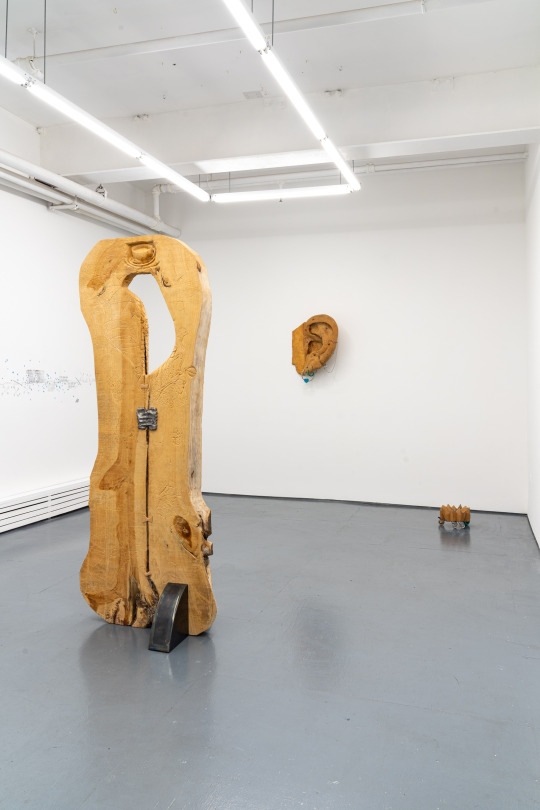
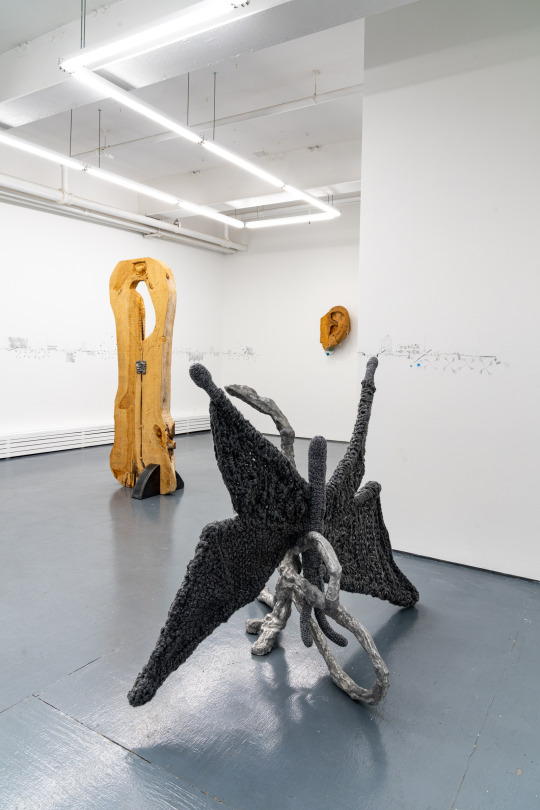


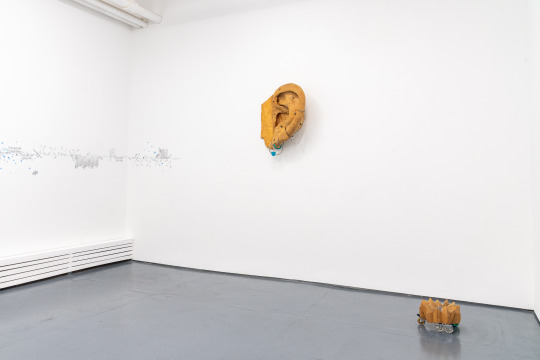
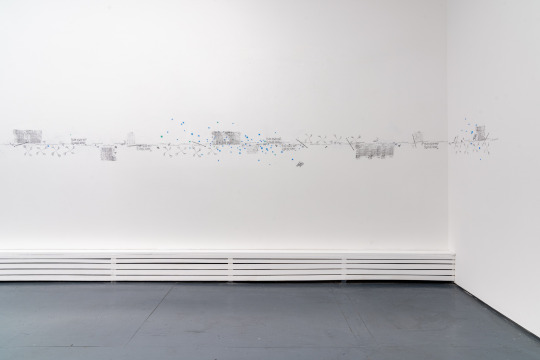
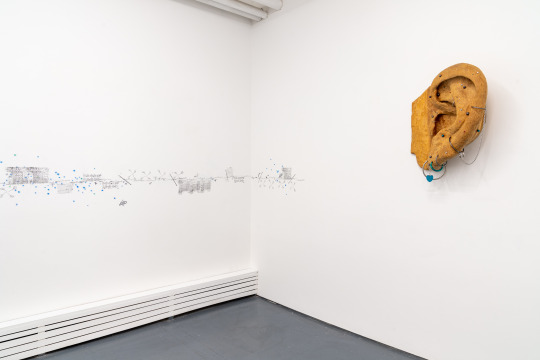


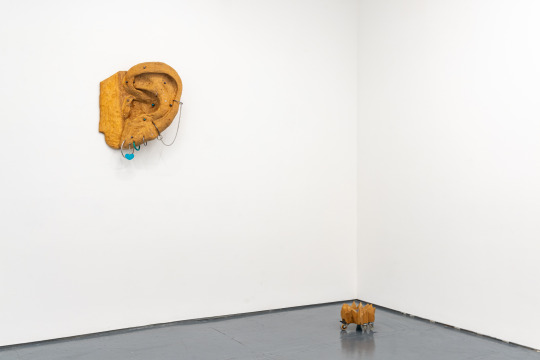


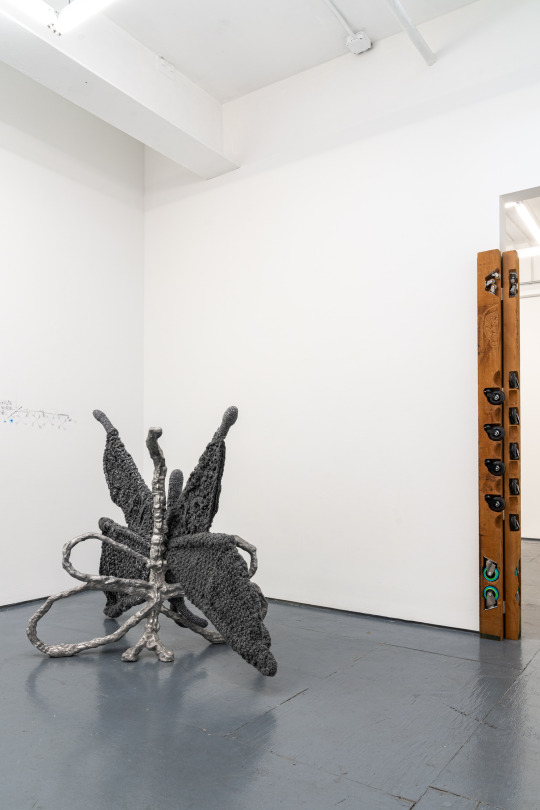


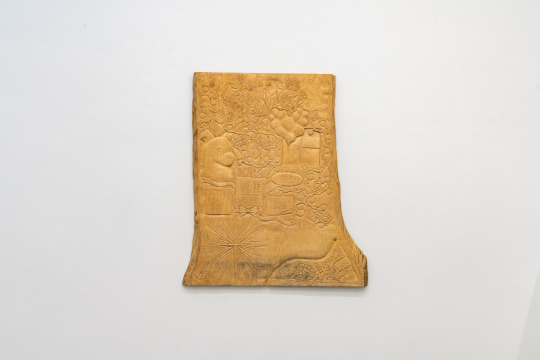

photos by Pratya Jankong
0 notes
Text
The Disappearance of Shere Hite At Nashville Film Festival 2023

Academy Award-nominated Director Nicole Newnham walked the Red Carpet at the Nashville Film Festival on Saturday, September 30th, for her 116-minute documentary The Disappearance of Shere Hite. It was exactly 47 years ago on the same date in 1976 that author and feminist Shere Hite held a press conference to announce the release of her first book, "The Hite Report." Hite, a model-turned-author, worked on the book for 5 years, distributing thousands of questionnaires about female sexuality to the women of America. "The Hite Report" would go on to become the 30th best-selling book in history, with 20 million copies sold in 36 countries. It was translated into 19 languages and became a groundbreaking phenomenon. Hite said she was a graduate student at Columbia studying the Enlightenment when she decided that, of the options available to her to support herself, writing this book on a subject she was interested in was her best option for making money. She had previously posed, often with little to no clothing, for a book cover artist and had done a pictorial for "Playboy". These photo shoots came back to haunt her and undermine her credibility in Puritan America after her initial success. Nudity, then as it is now in Puritanical America, is not well tolerated. While her childhood did not seem to be a particularly happy one, as her parents did not stay together and eventually each abandoned her, and she was raised by her grandfather, she seemed, even as a child, to be very self-possessed. There was mention of her having lived through three divorces in her young life before she arrived at her grandfather's house. Her attitudes towards sex and relationships were very progressive for the 70s and 80s, but she seems to have come to them all on her own. She once publicly announced that she was bi-sexual, at a time when few would go public with that news. Director Nicole Newnham talks about her Shere Hite documentary "The Disappearance of Shere Hite." Amazon described "The Hite Report" this way: "100,000 women, ages 14 to 78, were asked what they do and don't like about sex; how orgasm really feels, with and without intercourse; how it feels not to have an orgasm during sex; the importance of clitoral stimulation and masturbation; and to name the greatest pleasures and frustrations of their sexual lives, among many other questions. The Hite Report declares that orgasm is easy and strong for women, given the right stimulation; that most women have orgasm most easily during masturbation or clitoral stimulation by hand; that sex as we define it is a cultural institution, not a biological one; and that attitudes must change to include the stimulation women desire." The news that women could get off on their own, so to speak, was earth-shaking. The documentary states, "We (women) have been adjusting our bodies to male sexuality for centuries" and further states that 95% of women faked orgasms, often just to escape the demands of the ordinary missionary position, which, without manual stimulation, did not always work well for a woman's physiological anatomy. If women didn't need men to have an orgasm, were men threatened by becoming obsolete? Hite followed up her groundbreaking book on female orgasm with a book on the male sexual experience, and the men of America did not take kindly to the news that women could orgasm without them (from her first book) and that men were raised with a real problem communicating their true emotional state to others. The backlash was extreme and ongoing. Ms. Hite took it personally. She engaged with her critics and tried to correct their misconceptions about her and her work, but that simply led to frustration and ultimately drove her from the public arena in the United States. Publishers in the United States were not bidding on her subsequent books and her reputation was besmirched by those who chose to bring up her "Playboy" photo shoot and her other modeling jobs as a reason not to take her legitimate credentials seriously. Her methodology was under constant attack. The Director shared that the NBC team that worked on the film "were obsessed with it. We just loved it. We loved her." Ms. Hite was a very beautiful woman with a New York City wardrobe. She was always impeccably attired. The footage of her taken well into her fifties and sixties reveals a woman aging gracefully, who still has a body that she is proud of and is not too prudish to share herself with others. In fact, one of the reasons that Hite gave for writing her first book (and subsequent ones) was this: "Each individual should be able to decide how to share their body with another person." Hite also hoped that her work on male perspectives on sex (a book that did not sell as well) would allow cultural change to occur. But did it? Among some of the more surprising factoids in this Nashville Film Festival offering was the evidence of the successive erasure of knowledge. A word for clitoral stimulation does not even exist in English. In a clip taken from Stephen Colbert's show, we see that he is uncomfortable using the appropriate terms for female body parts. The clip of David Hasselhoff and Hite on the Mike Douglas show is a good indication of how difficult Hite's task was in repressive America. Shere Hite appears on the Mike Douglas Show with David Hasselhoff. THE GOOD The music in the film is especially good at underscoring emotional moments. Music Editor Porsteinn Evford and additional music, scoring, and score production by Paul Koch added immeasurably to the film's impact. At least 10 times during the film I wrote NICE MUSIC HERE with a plot point that it underscored, Hite's favorite Rachmaninoff 3rd piano concerto and various classical pieces by the likes of Chopin are used, and we learned from Director Newnham that Shere Hite left copious notes about her favorite musical pieces, who should play her if a movie were ever made, and what her favorite color palate was (rose and green). Voice-over work was done by Dakota Johnson, and it was exceptional. When you watch clips of the real Shere, Dakota Johnson's voice seems indistinguishable from the real woman. The cinematography and editing were equally excellent. The entire movie is a well-done, fascinating piece of history and it was encouraging to hear that the director plans to make more films about other "forgotten" women who disappeared (one during the Renaissance). I look forward to seeing more movies from Nicole Newnham's Cocofilms enterprise. It wouldn't surprise me to see her Oscar-nominated again. THE BAD We did not learn enough about "the early years," which may be because Shere Hite didn't like to talk about her troubled childhood. Plus there was so much to cover in her career. We didn't learn enough about her German pianist husband or her later life in Europe. She renounced her U.S. citizenship in 1995 and simply vanished from view. Modern women who were not around in the 70s or 80s don't know who she is or was. Wikipedia does not even have an entry. Her final years suffering from a debilitating nerve disease are also not covered. The filmmakers did not actually interact with Ms. Hite, who died in 2020, but another "bad" thing was her later pronouncements that she felt women of today were going to have to fight the same battles over again for equality. She believed that today's women would have to do more organizing, as had been done in the 70s and 80s. We don't know whether her marriage was happy or resembled many of those limned in the questionnaires she collected for her books. There was a slight amount of confusion regarding the film's final line of dialogue about a daughter. Hite had no children and the remark was from one of the questionnaires that was sent to the project, but it sounded very much like the voice representing Shere Hite. The progress towards a more accepting populace in 2023 seems nil. In fact, it seems as though we, as a country, are regressing, not progressing. T The treatment that the author receives on various talk shows (one, in particular, consisting of an all-male audience on "Oprah,") is hostile, unfriendly, and unfair. Hite almost gives off a vibe of an alien who has fallen to Earth, like David Bowie in "The Man Who Fell to Earth." She seems other-worldly both in her openness to all and in her appearance and presentation. Tragically, her success was, in some ways the best thing to happen to her while also the worst thing to happen to her. Publishers in the U.S. turned their backs on her and she was forced out of her homeland. It is also sobering to see the film clips of the Clarence Thomas hearings and realize what the class prejudice and racial prejudice of that hearing engendered. Hindsight is always better than foresight. Certainly the feeling after viewing this thought-provoking in-depth look at a fascinating forgotten celebrity author. A truly worthwhile two hours that will both entertain and inform. If you're Sher Hite's age (she died in 2020 at age 77) you'll remember her and her book. If you don't know Shere Hite or "The Hite Report," you definitely should check out this documentary. Read the full article
0 notes
Text
LVA's Artebella On The Radio 5.24.18
Mixed Media Artist Ashley Cathey and Photographer Zed Saeed were my guests this week. They are part of Looking Up: Heroes For Today – An LVA Exhibit at Metro Hall. Join us by tuning into WXOX 97.1 FM/Artxfm.com Thursday at 10am.
Ashley Cathey is a Louisville native whose paintings have brought her to prominence in a fairly short time after moving back to Louisville from Chicago. When she returned, she quickly found her footing and exhibited work in a group show at the Louisville Community Center, one of the Metro Parks community centers overseen by Portia White. From there, Cathey caught the attention of ArtsReach’s Julia Youngblood, who commissioned Cathey to create a series of portraits, which ArtsReach used for posters for their annual Keepers of the Dream celebration at the Kentucky Center for the Arts.
Zed Saeed is an art and documentary photographer currently working with recent refugees and immigrants that have settled in Kentucky. In Louisville, he connects with these individuals mostly through the Catholic Charities-Migration and Refugee Services. Saeed believes strongly in the power of photography to create connections and to alter perceptions about people, places and things.
Looking Up: Heroes For Today – An LVA Exhibit at Metro Hall, May 14, 2018 – January 11, 2019
#refugees#immigrants#diversity in public art#University of Louisville#Hite Institute#Catholic Charities-Migration and Refugee Services#Pakistan#large format camera#Kurdistan#women of color#portraits#painting#photography#Mayor's Gallery#Louisville Metro Hall
2 notes
·
View notes
Photo
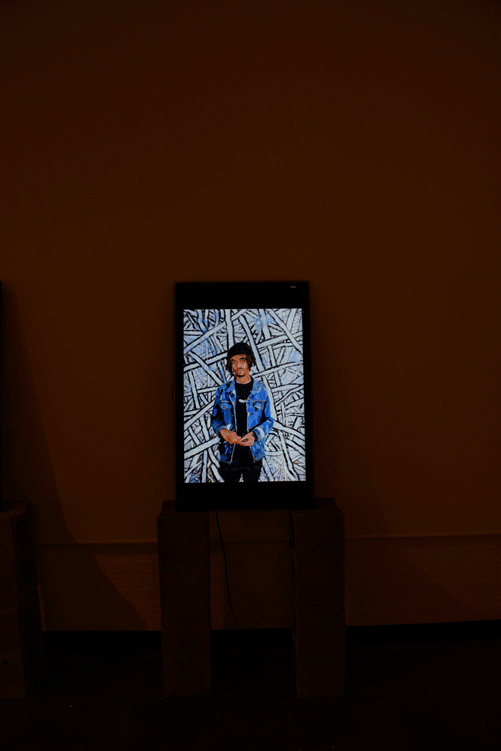
Gallery//018111601 - A gif of my work to kinda show the experience of seeing it in a gallery... still not the same thing but close.
#gif#art#painting#artgif#gifwork#image#painted animation#analog#film#35mm#frankwhitelemon#phakehawaii#modernart#contemporary#louisville#uofl#hite art#institute#bfa#fine arts#frank white lemon#francis thomasovich#painted
9 notes
·
View notes
Video
tumblr
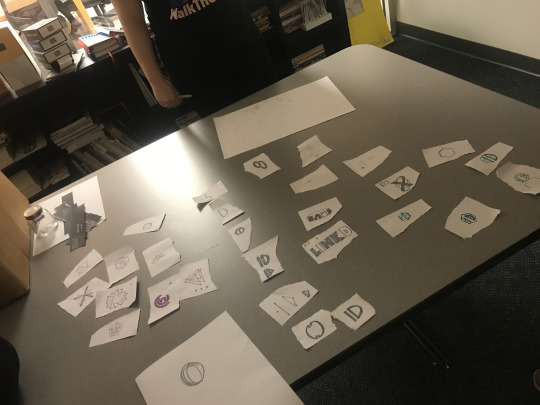
Logo sketches from our studio brainstorming session.

My logo artboards (above) and the final logo variations (below).

Our second prompt threw us a major curveball: develop an inclusive identification system and partnering interface. This identification was meant to take place on a global scale, including all citizens of the Earth. Of course, nothing like this currently exists in our world, so we were thrust into the unfamiliar world of speculative design. Luckily, we didn’t have to navigate this unknown territory alone—we got to work in groups! I worked with Zach Downs, Emily Frink, and Kylar Ware. It was honestly the dream team.
We spent the first week and a half researching identification systems that already exist in countries across the globe, searching for things that worked well for each system and what features overlapped between countries. From there, we began to compile a list of must-haves, should-haves, could-haves, and won’t-haves. The opening stages of this project were the most difficult to tackle. Conceptualizing for something that doesn’t exist takes a lot of brain power, and it was almost exhausting at times. But when we came up with a solution, it was really gratifying.
Our ID system concept was a small, non-intrusive, interchangeable device that could be worn or carried in multiple fashions and would serve as a catch-all for the important information that identifies us on a daily basis. This information included the typical notes one would find on today’s IDs, such as name, birthdate, height, weight, and address, as well as medical, criminal, and travel records. The device itself was a small disc that would measure the biometrics of the user for security and identification purposes, and the accompanying interface held different levels of accessible information for different authority systems. Possible wearable options included a necklace, ring, watch, hospital bracelet, credit card, or phone attachment. The device would only allow access to the user’s information if it was actively measuring their biometric data, whether it was reading their fingerprints, heartbeat, or vein patterns. Upon the verification of the user, more information would become accessible to whoever sought it through the app. Different types information would be provided to different sectors; for example, medical professionals would receive access to medical records, but law enforcement would only be able to look up the user’s criminal records. This would help ensure the user’s privacy. An accompanying scanner would be customized to the different sectors for accessing the information.
After a studio session of brainstorming adjectives and logo sketches, we decided to name this device LiNKd—from one of Emily’s sketches—because it links all of the user’s information together. For this concept, I was tasked with developing the logo and eventually animating it. We started with some abstract shape concepts with different color overlays and eventually moved to some one-color, monoline polygonal shapes. We still needed a wordmark, however, so I started playing around different typefaces, weights, and ways to bring ‘ID’ to the foreground of the word ‘LiNKd.’ We decided as a group to use a heavier weight, and class feedback during our interim critique suggested that the edges needed to be softer to convey more friendliness. In the end, we ended up favoring the wordmark over the abstract shapes.
In the final logo, the lowercase ‘i’ and ‘d’ represent the abbreviation ‘ID’ and are linked together by a horizontal bar. The letterforms are based on the typeface Proxima Soft with some minor weight alterations. The dots refer to hex graphs we used to gather and organize different types of ID information in our user interface.
Animating the logo became another fun After Effects challenge. This time around, I learned how to use trim paths! First, I had to recreate the letterforms using weighted strokes and separate them from the dots. This took some time and quite a bit of adjustment, but it was super exciting when I got the strokes to match up with the original outlines almost perfectly. After figuring out how to operate trim paths with those strokes, I played around with scaling the dots into the composition, then added that same effect to the trim paths so that the letterforms didn’t just suddenly appear out of nowhere. They start as growing circles, then eventually expand into their final forms. Lastly, I decided to reverse the effects so that the animation could become loopable. Adjusting the timing took hours upon hours, but I think investing the time in this animation produced a really cool product that could be incorporated as another interactive element in the digital interface.
Unfortunately, I had to miss our last studio day due to travel for the ACC Women’s Basketball Tournament, and therefore missed some of the final development of our interfacing—but our basketball team ended up winning the whole tournament, and I witnessed my first UofL conference championship as a senior, so I have no regrets. I’m grateful for the communication our team shared through Slack, as we were able to keep each other moderately updated with the progress we were making on things. Overall, this project was a lot to take in, but I think we came up with a really great idea. I know that there is no way I would have been able to develop a concept like this on my own. Our collective brain power brought a lot to the table, and I’m very excited that I get to work with this group again for our final project of the semester (and college!!!).
2 notes
·
View notes
Text
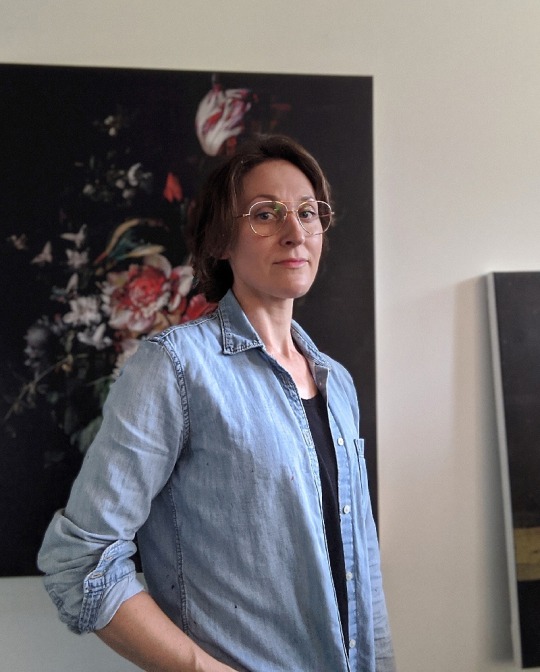





TIFFANY CALVERT received her MFA in 2005 from the Mason Gross School of the Arts at Rutgers and her BA in 1998 from Oberlin College. She first exhibited at Jonathan Ferrara Gallery in the 2020 group exhibition Art in Doom, curated by Matthew Weldon Showman. Calvert’s work has also been exhibited at the Lawrimore Project (Seattle, WA), E.TAY Gallery (NY), the Speed Museum (Louisville, KY), the Susquehanna Art Museum (PA), and Cadogan Contemporary (London, UK), among others. Residencies include the Djerassi Resident Artists Program, I-Park, and ArtOmi International Arts Center where she received a Geraldine R. Dodge Fellowship. Calvert has received grants from the Great Meadows Foundation and the Pollock-Krasner Foundation. She is Associate Professor of Art at the Hite Institute of Art & Design, University of Louisville and a member of the Tiger Strikes Asteroid curatorial collective.
As an artist, Tiffany Calvert applies contemporary painting techniques to historical imagery. Her recent work uses the seventeenth-century Dutch floral still life as a springboard for exploring the shifting nature of human perception. Calvert’s paintings incorporate diverse technologies, including fresco, 3D modeling, and data manipulation. The exhibition includes eight new paintings from her latest series which uses image generating machine learning models (StyleGAN) trained on images of 1,007 historical still life paintings to create the image printed on canvas. A digitally-designed large format vinyl stencil is then applied to the surface before being painted on with oils. When the stencil is peeled off it creates hard edges, and preserves areas of the print. John Yau, in his Hyperallergic profile, compares their “improvisational riffs and fractured views” to de Kooning.
#tiffany calvert#jonathan ferrara gallery#women artists#contemporaryart#artsdistrictneworleans#jfg artist
3 notes
·
View notes
Text
@annalis-e--shadowofpanem
A billion, trillion stars away, a team of people were hired specifically in the task of devising the introduction of the daughter of one Empress Kwok An to the world, so that they may–one day soon–crown her Empress. Convincing New Imperial China that their figurehead has an adult daughter that they knew nothing about was a full time job, but convincing the world? Even trickier. But everything was made all the more difficult by the daughter’s unwillingness to abandon her life’s work. …How does one remain a Shadow, an agent of espionage, while sitting on a throne for all the world to see…?
Ella couldn’t possibly know the parallels she drew to Pan’s life by asking. It was likely that she never would.
At her host’s invitation, Pan sat nearby and pondered the answer, herself. “Willingly? No. I like life here on the ground. But I could. Many people here whisper that the title wields no power, there’s a lot of good to be done with the influence that comes with it. I think that’s something the people fail to understand: the Empress inspires, and inspiration is, itself, a superpower. It leads to loyalty, loyalty breeds a body of strength and any body of strength is a force that can lead to change. Me, personally, I would use what power I had for the benefit of others and once you absolve to that– power folds. Increases. It helps more people. So on and so forth. If anyone had that initial courage, it could yield something grand.”
In an instant, she understood Vermilion’s angle.
“I don’t surmise to known Orlain’s inner thoughts and machination” she lied, ”but I know that she is in the perfect position to reshape the world for the benefit of those she’s meant to serve. All she needs is courage in the face of the status quo. If I had money to wager, I’d bet she has plenty of courage.”
From where she sat, she imagined the inside of the palace, Vermilion making her way through each of the halls. She was a child when she arrived, and she spent five years learning the machinations of the world. In this instance, Pan was a betting woman: She’d wager a healthy sum that even as she came into adulthood as Orlain’s handmaiden, no one except a select few had even seen her face.
Hite would be proud. If he were still living.
Ella’s gaze went back out over the vast city. It spread for hundreds of miles, tapering out only a little at the border, beyond which lay the great lake Ashara. Beyond Ashara was the South City, the actual birthplace of The Dagilachian world.
This once wellspring of life was being gradually drained by the imposing capital, The South was riddled with mines, industrial plants, refuse centres and nuclear facilities. Even the water which the earth naturally yielded was increasingly tapped and stolen away by northern pipelines.
The debutante raised her glass to the glimmering twilight city, toward the palace. “A toast to Orlain, may she find that courage.” The words seemed sincere, but the weary edge remained in Ella’s voice. She finished her drink.
“You know I’m not sure I know your name?” She rolled her eyes. “And I don't mean those irritating pet names my mother likes to give all the staff, by the Lords I don't know why she does that-”
“-Ella!”
A hushed, panicked voice cut her off and Gopal was suddenly there, grasping his sister by the elbow. He was a year younger than her at eighteen. Ella might have been worldly, but Gopal was a great deal more mature.
His sister frowned at him and pulled her arm away instinctually. “Gopal what is it? You startled me!”
“You have to go, you have to go now!”
Silence fell steely over the three on the balcony. Ella frowned at him. She knew her brother, he wasn't one for games. He was genuinely terrified.
“What are you talking abo-”
“I just heard father in his study with Gaspar Khuder, he’s furious. He says he wont let the marriage go ahead unless there are consequences for this...” He gestured desperately to the crimson cascade around Ella’s neck. “No marriage, no business deal between our families. They said something about a mental institute and correction treatment.” Gopal’s voice was fast and thready. He fished in his pocket and withdrew a square metallic card which he pressed into his sister’s hand, all the while he looked directly past the other woman as if she weren't there, as he had been trained to do.
Ella looked at the key card in a far off way, then back to her brother with the same expression.
“No...” She shook her head. Nothing seemed real. “Mother would never let him.”
“Ella!!” Gopal grasped his sister by the arms and tears welled up in his eyes. “This is real. It always has been.” He began to cry. “Lords damn you for this. You have to go and you cant come back. Ever. My ID will get you into the underground garage and it’ll start my car.”
“You know I don't know how to drive! I don't know my way anywhere! They wouldn't let me learn!”
His gaze slid sideways to the other woman suddenly, as if only just becoming aware of her presence. “I swear on all the Lords if you say anything about this, I...I will make you and anyone you care about suffer more than you could possibly imagine!” It was an empty threat, and it showed. Unlike his father, Lawrence Ardente, Gopal had no use for violence and no real desire to utilise intimidation.
“Gopal.” Ella said softly, but firmly, grasping her brother’s shoulder. She looked past him to the woman who had brought her the glass of brandy. Ella’s face was a picture of both dreamlike disbelief and stricken realisation.
Ella knew that such things happened. Everybody knew, and yet she had always assumed that somehow, it would never happen to her. If what Gopal had heard was true, it could mean something very close to a death sentence...In which the ‘patient’ was so utterly altered by the process that one would be hard pressed to say that any personality remained.
“Will you help me?” She asked with a vulnerability that was most uncommon.
1 note
·
View note
Text
0 notes
Photo

Richard Gallo
University of Louisville - Hite Art Institute
26 notes
·
View notes
Text
Thank you, Russian Doll.
Tw: Suicide mention, abuse mention, substance abuse mention
When I was 20 years old I literally tried to drink myself to death.
I remember hoping the bourbon with the pills I’d taken earlier were enough. I remember pouring my unassuming friend another drink and pretending I was okay (Bre, if you’re reading this, I’m really sorry). That’s it. That’s the extent of what I remember about that night.
I woke up the next morning in my mother’s bed.She was furious. Everyone was annoyed or pissed at me in one way or another, with reason. I was angry at myself, partially for thinking of doing something so stupid and also partially for failing at it.
It’s been five years. The person who is responsible for a good portion of the trauma I’ve endured is still around. She never went to prison, never went to court, never once received any of the divine justice she more than definitely deserves. She hasn’t really done anything with her life. I don’t know if she’s inflicted any more trauma on anyone new. She just exists.
When Alan was disturbed by the fact that his death routine changed on him upon meeting Nadia, I felt it in my core. Russian Doll does a lot of things masterfully but what it does the best is show what life is like when you don’t address your own baggage.
Alan had his daily affirmations on his phone while he walked through New York City. I had Beyonce’s track “Yonce” on repeat every time I walked into the Hite Art Institute. Alan furiously tapped on his engagement ring in the elevator. I chewed Trident gum until it hurt my jaws. Alan binge eats delivered cake on his couch. I made a sport out of eating as little as possible.
Routines are traps and safety nets. My routine kept me from ending my life again but it also stopped me from living. I had an actual route to avoid my stalker on campus. I had hours in which I allowed myself in wings of certain buildings. I called my friend again and again when he didn’t answer because my brain was programmed to assume he was dead. Like Alan and Nadia, I found myself in a cycle of getting through each day, maybe even a week, just to crash and burn and start all over again.
It wasn’t without consequences. I lost my gallbladder at the age of 22 as a result of food restriction and severe anxiety. I didn’t go to many events and missed out on forming some very strong friendships because I was scared they were friends with this abuser. The party that should’ve been my college years, what should’ve been the most stress free part of my life, emptied the fuck out like Nadia’s, nothing left but Maxine twirling in an empty kitchen.
I am still resentful of what happened to me. I am still resentful of my attacker. I do not forgive her. I don’t believe she deserves forgiveness and she has done nothing to make me thing she has grown as a person in the least. I do not mince words about her and I do not hide about how I feel about her actions to anyone anymore.
But I’ve also decided to choose life and living. I broke my routines, slowly. I am still breaking my routines. I adjust myself to new things on a daily basis and I am fucking proud of myself for it. Tonight, I opened up to a friend about my trauma and she was there for me. And as we watched this magnificent show, we shared a giant pizza. And I didn’t count the calories or only nibble on once slice. I ate half the fucking pizza. I had a cookie. We let our minds be blown and we let ourselves be moved by the resilience of these characters.
I am currently not feeling well. I was called pathetic tonight, for not mincing words. There is some validity in the anger but no justification to the insults. Tonight I am breaking my routine, again. I will not blow up this person’s phone. I will not beg for this person’s attention. Instead, I will finish this piece. I will work on a mixtape I’ve been putting off out of exhaustion. I will tell myself that I am beautiful, I am loved and I am worthy of love. I will tell myself I am strong. And then I will go to sleep. And I will live another day.
2 notes
·
View notes
Text
Automatic Door Market Will Hit Big Revenues In Future | Biggest Opportunity Of 2022
A Latest intelligence report published by AMA Research with title "Global Automatic Door Market Outlook to 2027 This detailed report on Automatic Door Market provides a detailed overview of key factors in the Global Automatic Door Market and factors such as driver, restraint, past and current trends, regulatory scenarios and technology development.
Automatic door is operated automatically using the sensor. There are various types of sensors are used in automatic doors including infrared sensor, photoelectric sensor, and others. Infrared sensors are work on change in temperature when a human passes through the automatic door, the infrared sensors sense the warmer temperature and work the door thereby. Automatic door is available on malls, hospitals, new technology airports, and multiplexes.
Major Players in this Report Include areASSA ABLOY (Sweden)
Royal Boon Edam International B.V. (Netherlands)
dormakaba Holding (Switzerland)
GEZE UK Ltd. (England)
STANLEY Access Technologies LLC. (United States)
Entrematic Group AB (Sweden)
PORTALP Automatic Doors (United States)
Rite-Hite (United States)
SHIPYARDDOOR PVC Fabric Door Systems (Turkey)
Gilgen Door Systems AG (Switzerland)
Market Drivers: Rising Demand in the Hospitals
Increasing demand For Clean Rooms
Growth in Hotels as well as Mall Construction Market Trend: Growth in Automation in Construction
High Usage of New Technology in Door System
High Adoption of Smart Buildings Opportunities: Fueling Infrastructure Projects in Emerging Nations The Global Automatic Door Market segments and Market Data Break Down by Type (Sliding Door, Revolving Door, Swing Door, Folding Door), Application (Institutional, Residential, Commercial), Distribution Channel (Online, Offline)
Geographically World Automatic Door markets can be classified as North America, Europe, Asia Pacific (APAC), Middle East and Africa and Latin America. North America has gained a leading position in the global market and is expected to remain in place for years to come. The growing demand for Global Automatic Door markets will drive growth in the North American market over the next few years.
Presented By
AMA Research & Media LLP
0 notes
Text
Feature: Tom Marsh Legacy
“By practicing a potentially usable art and by insisting on its usability, and the commonness and local peculiarity of his materials, he points it toward the older, finer, healthier sort of artistic success: that such excellent workmanship, such beauty and distinction, might again become ordinary.“ — Wendell Berry on Tom Marsh*
If past is indeed prologue, then perhaps we live in the present only by the leave of our ancestors; formative influences, and most especially our teachers. Tom Marsh was a teaching artist in the Greater Louisville area for more than 25 years, first at Silver Creek High School in his native Indiana during the 1960’s, and then as the founder of the Ceramics program at the University of Louisville’s Hite Institute for Art, where he taught until his death, in 1991.
It is also said, by those who loved and admired him the most, that he was demanding. Surely this is a requisite quality for any worthwhile mentor, and, from all accounts, Marsh set expectations as high for his own work as he did for anyone else, and the program he developed for U of L was unorthodox, moving beyond traditional studio parameters. Certainly experience has taught us that innovation often translates for some as ‘difficult’.
Marsh was raised by missionaries, and studied painting with Mary Spencer Nay at the University of Louisville. A missionary trip took him to Mashiko, Japan, where he ended up staying for several years, studying pottery with Sakuma Totaro (1900-1976), and learning various strands of Buddhism, most notably Rinzai. Once he returned to the U.S. he eventually resettled in Borden, Indiana, living his later years in adherence to ethical and spiritual practices born of his time in Japan, building an aesthetically spare house in the secluded woods that featured multi-functional space - the bed was raised on pulleys to make room for working.
This holistic approach was indicative of what University of Louisville colleague and current faculty Jim Grubola calls the, “potter-philosopher” ideal that Marsh strived to embody. He brought it into his teaching, breaking out of the confines of the studio to instruct students in building outdoor kilns as a part of curriculum, a practice that brought many conflicts with both the Louisville Fire Department and University officials.
As for the work, Marsh’s ceramic pottery follows the Japanese aesthetic that finds beauty – “art,” in the strictly functional: large scale vessels for storage (because smaller pieces for daily use were commonly made from lacquer or wood), and tea pots. The full, earthen physicality might seem to contradict the western (mis) perception of delicacy as a defining characteristic of Japanese art; these are full, solid forms of visual and tactile weight. Their functionality never feels in question.
Another U of L associate, retired Print Faculty John Whitesell, describes how Marsh developed his techniques for the “expanded form jar,” in which the walls of the vessel are pushed to their limits and the outer surface begins to “crack”: “He would go beyond what you would imagine was possible… he would just keep working it, and working it.” The resulting complex, “fractured” surface texture became a trademark of Marsh’s work, a careful balance between structural integrity and creative aesthetic. However much the artist valued function, the rustic, earthy beauty of the work was always astonishing.
Whitesell also talks of “the anonymous potter,” which is a term that evolved when Marsh worked alongside his wife, Ginny Marsh. In the images of work shown here, from a 1984 sabbatical exhibit at U of L’s Schneider Galleries, all of the work is identified as simply Marsh Pottery, with no distinction given as to which Marsh created which piece. While there may be some who felt they could detect differences, Grubola, for one, could not be certain, because the nature of the vessels had gone in such an elemental direction: “Particularly towards the end,” says Grubola, “the work became more intuitive and less refined.”
Students came to U of L to study with Marsh specifically; to learn the Japanese-based techniques and life philosophy he expounded. Laura Ross, Wayne Ferguson, Sarah Frederick, Fong Choo, Pam Korte, Bran Hazelet, and Gwen Heffner are but a few notable potters for whom Marsh was a mentor, and many of them still live, work and teach in the area.
All of the concentration suggests that Marsh never did anything halfway. One of his teaching tools were sophisticated, multi-media presentations that he also took all around the U.S. at a time when such things were not common. “For someone so dedicated to a simple agrarian lifestyle,” remembers Whitesell, ”Tom was well-versed in technology, and had multiple projections fading in and out… synched to a pre-recorded soundtrack. It was very impressive.”
"These pots and cups and bowls are not busy calling attention to themselves as 'art objects.' Their preferred habitat is a kitchen, not a museum. They invite use. They are not just viewed. Viewing, by itself, will misunderstand them--just as, by itself, it will misunderstand the food." — Wendell Berry
Examples of Marsh pottery are in permanent collections of museums worldwide, including the Museum of Modern Art in Kamajura, Japan.
Name: Tom Marsh (1934 -1991) Hometown: Sellersburg, Indiana
Written by Keith Waits. Entire contents copyright © 2016 Louisville Visual Art. All rights reserved. *From “Tom Marsh/Potter: Twenty Three Years of Clay”, published by University of Louisville, 1979.
#tom marsh#legacy#louisville#arts#artist#teacher#greater louisville#1960's#hite institute#silver creek high school#ceramics#mentor#experience#translate#difficult#mashiko#japan#mary spencer nay#woods#space#jim grubola#potter-philosopher#outdoor#kilns#building#teaching#beauty#art#solid#forms
1 note
·
View note